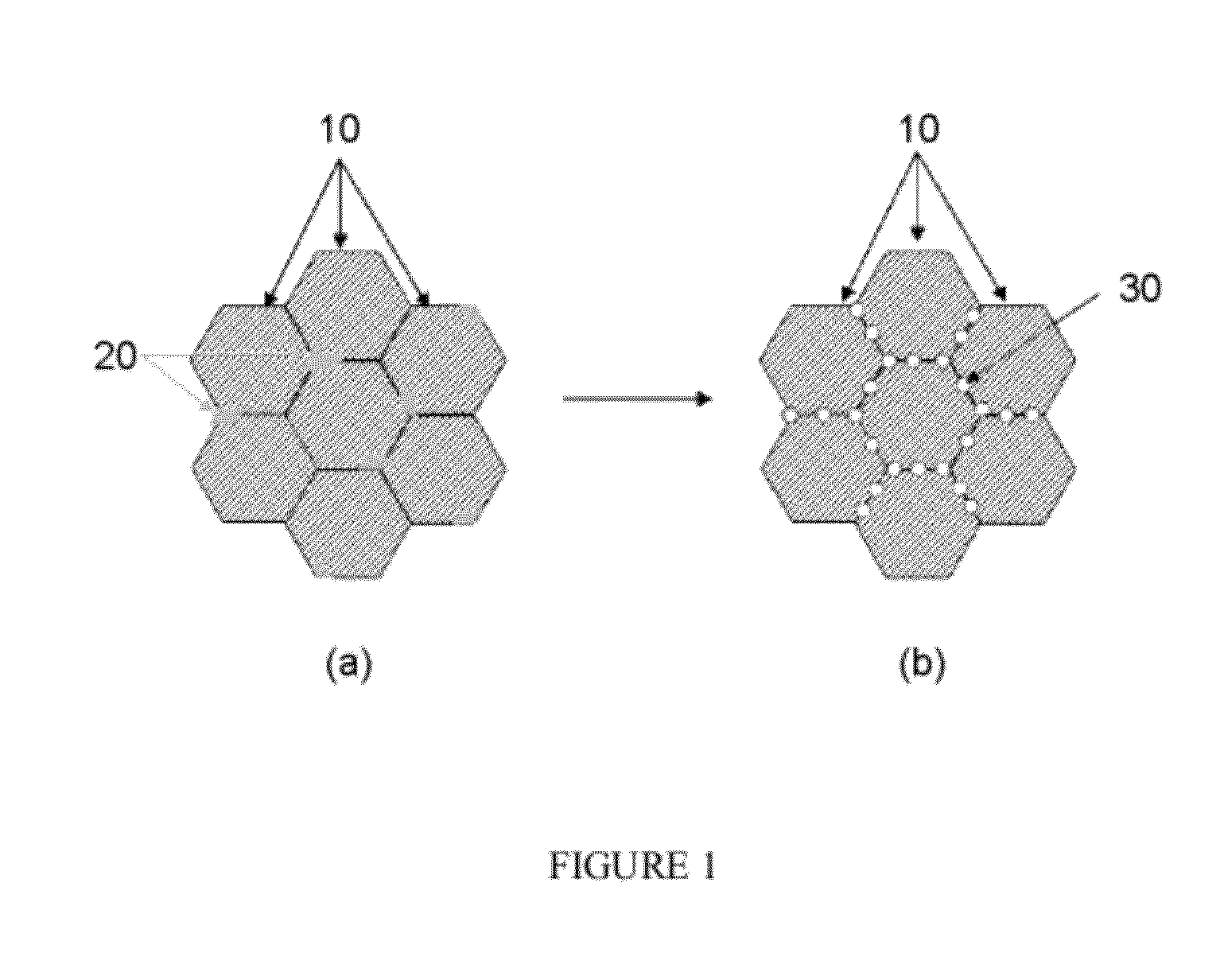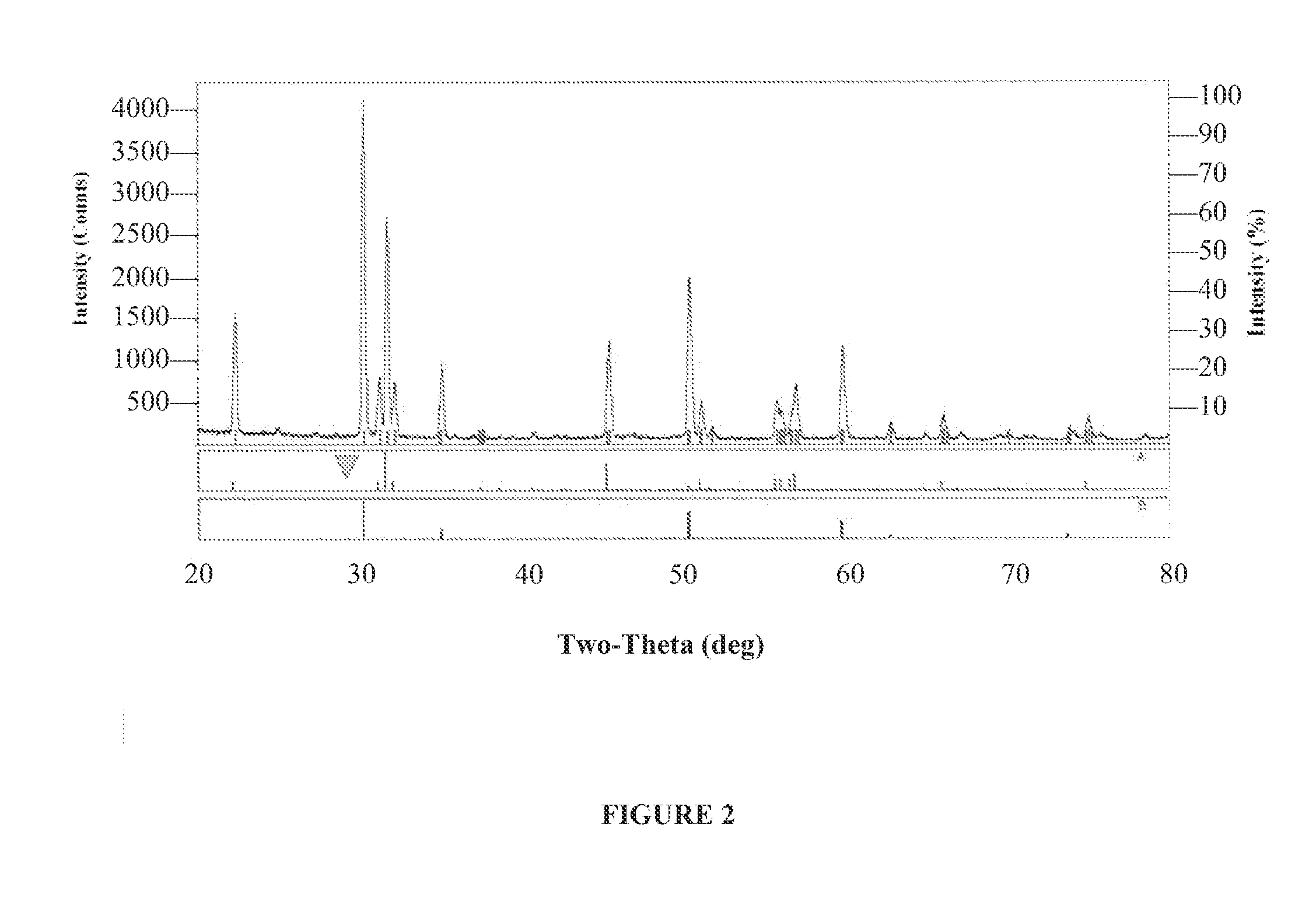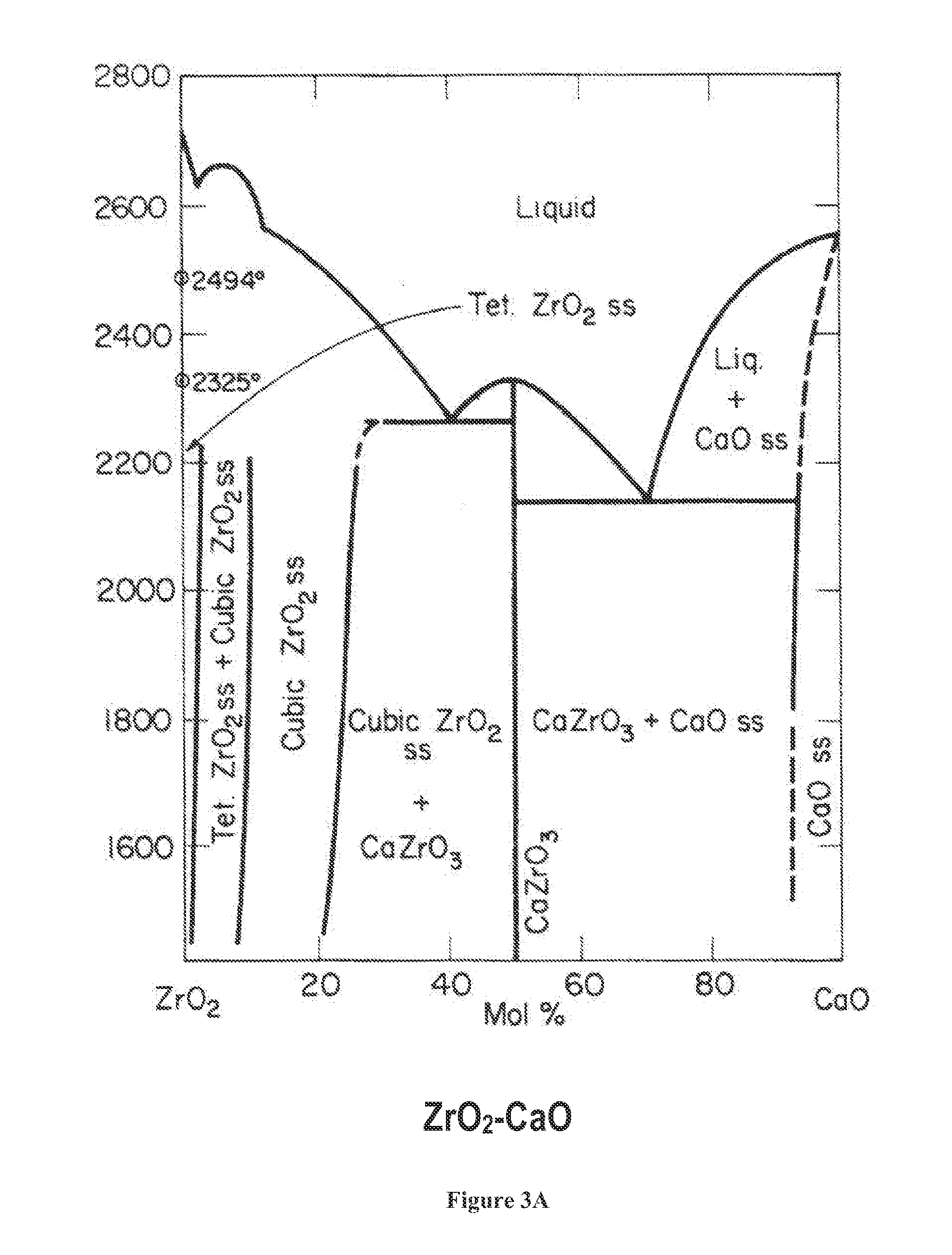High Temperature Catalysts for Decomposition of Liquid Monopropellants and Methods for Producing the Same
a technology of liquid monopropellant and catalyst, which is applied in the direction of catalyst activation/preparation, metal/metal-oxide/metal-hydroxide catalyst, etc., can solve the problems of excessive sintering of catalyst, void formation, and ineffectiveness of conventional catalyst applied to these formulations, and achieve excellent thermal shock resistance, high mechanical, chemical and thermal stability, good compatibility
- Summary
- Abstract
- Description
- Claims
- Application Information
AI Technical Summary
Benefits of technology
Problems solved by technology
Method used
Image
Examples
example 1
Production of CaZr1+yO3+2y Granules Where y=0.1, Using Flash-Freeze Process and Reactive Sintering
[0067]Necessary amounts of CaCO3 and ZrO2 powders to give a mole ratio of Ca / Zr=1.1 and total solids loading of 16% vol were dispersed in water by ball-milling using an ammonium polyacrylate type dispersant. After milling is complete, a water-soluble binder such as polyvinyl alcohol was added to the slurry at a concentration of 3.0% by weight to the powder (solids). The milled slurry was dispensed into a cold hexane bath held at a temperature of −60° C. using a spray atomizer and feed pressure of 2 psi while keeping the spray nozzle at least 2 cm above the height of the hexane. The flash-frozen granules were then removed from the hexane and placed in a freeze-dryer sample chamber held at a temperature of −20° C. to insure the granules did not melt. The pressure inside the freeze-dryer chamber was reduced to 1400° C. to facilitate reactive sintering and formation of ceramic granules with...
example 2
Coating of CaZr1.1O3.2 Granules with Iridium (Ir)
[0068]The CaZr1.1O3.2 granules produced in accordance with Example 1 herein above were coated with iridium (Ir) via wet deposition using a dihydrogen hexachloroiridic acid solution to give a loading of 5%-10% by weight Ir. The Ir—CaZr1.1O3.2 catalyst was subject to engine fire tests with a HAN-based ionic salt propellant and ignited 10 lbm of propellant in random sequences of 0.1 sec-20 sec duration pulses and survived >1,000 pulses with an accumulative fire time of >7 minutes (Zuttarelli, A., Gabrang, G., Gumulak, P., Moore, J., Zankich, V., Sawhill, S., “AFRL Advanced Monopropellant Risk Reduction (AMRR) Effort for Ionic Liquids,” 57th JANNAF Propulsion Conference, Colorado Springs, Colo., May 2010).
example 3
Production of CaZr1+yO3+2Y granules where y=0.85, using flash-freeze process and reactive sintering and coating of said granules with iridium (Ir).
[0069]CaZr1.85O4.7 granules were produced using the procedure set forth in Example 1 above except that the slurry contained necessary amounts of CaCO3 and ZrO2 powders to give a mole ratio of Ca / Zr=1.1.85. No other significant changes were made to the said procedure. The CaZr1.85O3.2 granules were coated with iridium (Ir) via wet deposition using the same procedure described in Example 2 above. The Ir—CaZr1.85O4.7 catalyst was subject to engine fire tests with a HAN-based ionic salt propellant and demonstrated an accumulative fire time of >30 minutes.
PUM
| Property | Measurement | Unit |
|---|---|---|
| Temperature | aaaaa | aaaaa |
| Temperature | aaaaa | aaaaa |
| Temperature | aaaaa | aaaaa |
Abstract
Description
Claims
Application Information
 Login to View More
Login to View More - R&D
- Intellectual Property
- Life Sciences
- Materials
- Tech Scout
- Unparalleled Data Quality
- Higher Quality Content
- 60% Fewer Hallucinations
Browse by: Latest US Patents, China's latest patents, Technical Efficacy Thesaurus, Application Domain, Technology Topic, Popular Technical Reports.
© 2025 PatSnap. All rights reserved.Legal|Privacy policy|Modern Slavery Act Transparency Statement|Sitemap|About US| Contact US: help@patsnap.com



